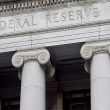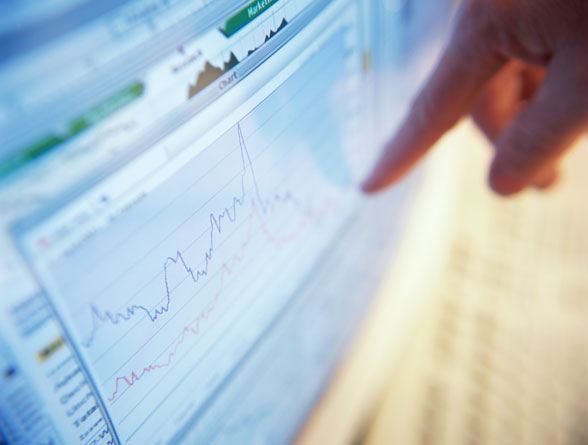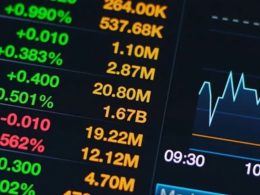by Ben Carlson, A Wealth of Common Sense
“In the stock market, value standards don’t determine prices; prices determine value standards.” – Benjamin Graham
I was having a conversation on Twitter last Friday afternoon with my favorite pseudonymous blogger about the relative underperformance of emerging market stocks to U.S. stocks. He ticked off a laundry list of reasons that there’s a good possibility for this relative outperformance in the U.S. to continue. I couldn’t argue with any of his conclusions. They all made sense.
I was just about to reply with the standard, “Don’t you think those reasons are all priced in at this point?” before catching myself and realizing that this is one of the worst arguments to make when talking about the markets. I always shake my head when I hear this argument because no one ever really knows what’s priced in to a security, market or asset class.
To be able to say with a great degree of confidence that you know what’s priced in requires two parts to the “priced in” equation: (1) The intrinsic value of the investment in question and (2) The short-term psychology of the other market participants. You can make a reasonable educated guess on these two factors, but no one can forecast either with anything remotely approaching the precision needed to understand what’s priced in and what’s yet to come.
James Osborne covered the degree of difficulty involved in the intrinsic value approach in a post last week:
If you want to come to me and say “The intrinsic value of this stock is $45 because that is what investors have historically been willing to pay for these earnings so it is a buy at $30,” my simple question is: why isn’t the market willing to pay for those earnings today? Ultimately, intrinsic value is decided by the market. It is an odd bit of dissonance to state that today the market is wrong about a stock’s “intrinsic value” but to expect the market to get things “right” sometime in the future.
The best you can hope for as an investor is Graham and Buffett’s margin of safety and even that requires a very patient and disciplined approach. Buffett wrote his famous New York Times op-ed a month after Lehman Brothers went under in the fall of 2008 when he said: “Buy American. I am.” The S&P 500 was down roughly 40% from the peak seen a year earlier, but here’s what Buffett had to say at the time:
Let me be clear on one point: I can’t predict the short-term movements of the stock market. I haven’t the faintest idea as to whether stocks will be higher or lower a month — or a year — from now. What is likely, however, is that the market will move higher, perhaps substantially so, well before either sentiment or the economy turns up. So if you wait for the robins, spring will be over.
And he was right on both accounts. The market dropped another 30% from the date he wrote than piece until finally bottoming out five months later. I’m not saying emerging markets are a screaming buy at these levels like Buffett was saying about U.S. stocks in the fall of 2008. That’s a stretch since values go from being absolute to relative during a long bull market.
Energy stocks are another relative underperformer, having gotten slammed this year as the price of oil has crashed. You could make many very good arguments to not go near these stocks right now, just as you can with emerging markets. The thing is that there are always going to be good reasons not buy something when it’s underperforming or suffered a large drawdown. Investments don’t get cheap or fall for no reason.
This is why value investing can be so difficult. You’re going against the current into the carnage. No one ever really feels comfortable buying underperforming assets because they’re always littered with problems.
But Buffett wasn’t saying, “here’s the bottom, buy today or else.” He was saying that things were starting to look attractive. And since he felt there was a margin of safety, it was time to start buying over time. The best purchase Munger and Buffett made during the crisis was actually five months later on the xact day that the market bottomed when they bought shares of Wells Fargo. Buffett’s favorite bank was around $8 a share on that day while it’s now over $50.
Once they found they’re margin of safety they kept on buying. In a sense they dollar cost averaged into the market while stocks kept going down.
I think that’s the true sign of a value investor – someone that’s willing to continue buying and rebalancing into an investment or asset class that they deem to be worthy enough to gain inclusion in their portfolio, even if it continues to fall after they make the initial purchase. The true bargain basement prices are only going to be known with the benefit of hindsight. Cheap investments can always get cheaper.
Again, I’m not sure that emerging markets or energy stocks are going to make good investments from these levels. It all depends on your time horizon and threshold for pain in the meantime. I don’t know what’s “priced in” or how investors are planning to allocate their capital to those areas in the future. But I think if you’ve decided to make the leap into either of these investments, or any other relative values for that matter, and consider yourself a value investor, the best risk control is to make periodic purchases over time. The other is having a diversified portfolio of assets because you just don’t know when things are going to turn around for the laggards.
Diversifying over time at lower prices is a value investor’s dream scenario, assuming they have the available capital. It’s also one of the hardest things to do because no on ever really knows what’s priced in.
Sources:
Is there such thing as “intrinsic value?” (Bason)
Buy American. I Am (NY Times)
Further Reading:
Why Value Investing Works
Subscribe to receive email updates and my monthly newsletter by clicking here.
Follow me on Twitter: @awealthofcs
Copyright © A Wealth of Common Sense
















